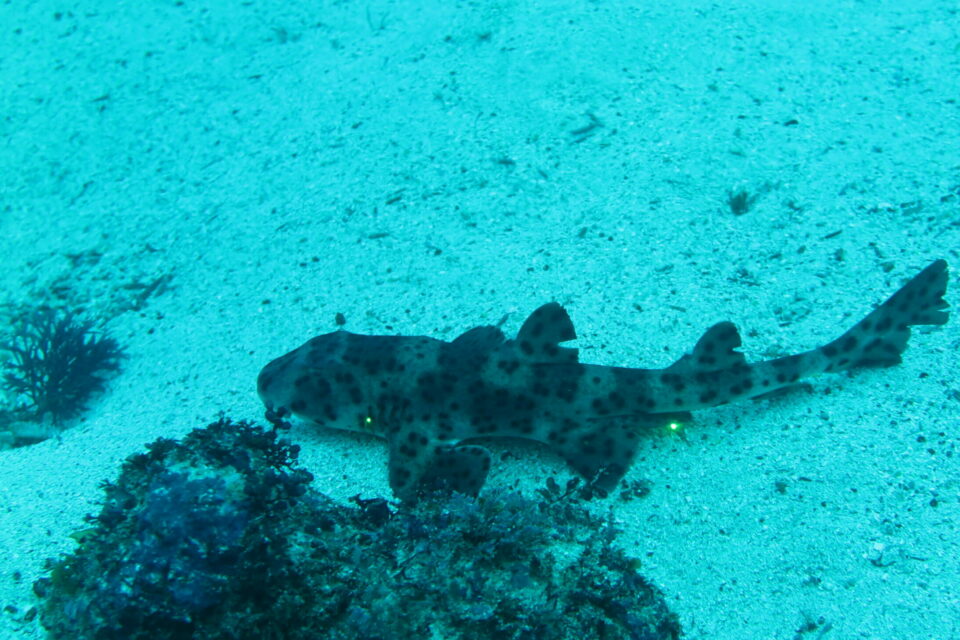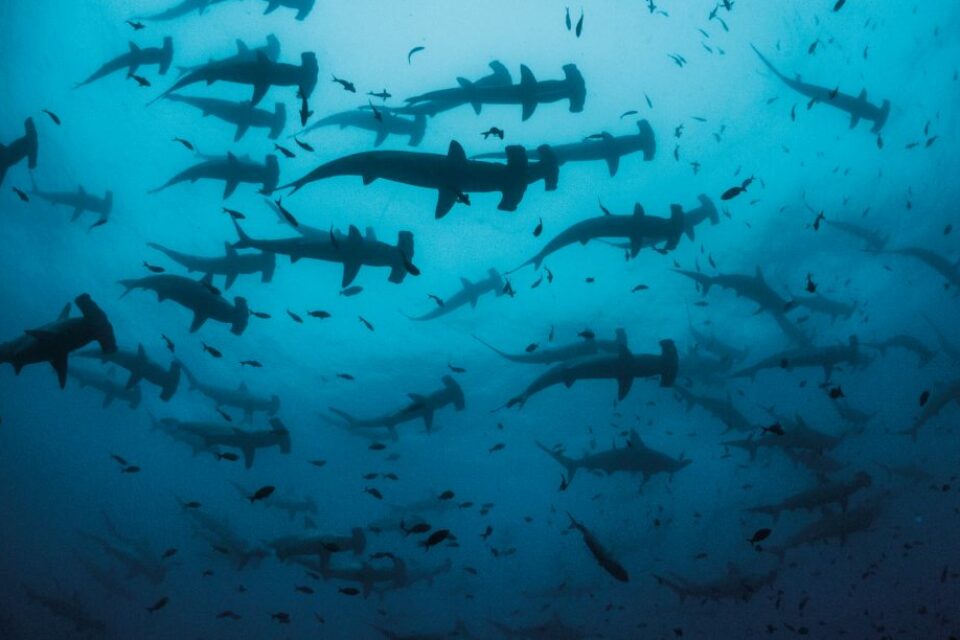

Galapagos marine reserve expansion brings hope – but new management challenges
Highly productive waters support incredible marine biodiversity in Galapagos. The Galapagos marine reserve expansion brings hope for greater protection of this diversity but also new management challenges.
Highly productive waters from the confluence of major ocean currents support the incredible marine biodiversity that the Galapagos Marine Reserve (GMR) is famous for. Thanks to over a decade of species tracking data collected by the MigraMar network and the Galapagos Whale Shark Project, both supported by Galapagos Conservation Trust (GCT), strong connectivity has been demonstrated between the GMR and other biodiversity hotspots in the Eastern Tropical Pacific, as migratory species, such as Critically Endangered scalloped hammerhead sharks, travel across open waters to important feeding and breeding grounds.
However, the productive conditions also attract intense fishing efforts by industrial fishing fleets, especially in the waters around the GMR. There are major concerns around illegal activities associated with these fleets, such as fishing within the GMR, at-sea waste dumping, and the use of unsustainable fishing methods, such as ecologically damaging long-lines or Fish Aggregating Devices. Together these issues contribute to the overexploitation of fish stocks, threaten migratory species and decrease ocean health, reducing resilience to climate change.
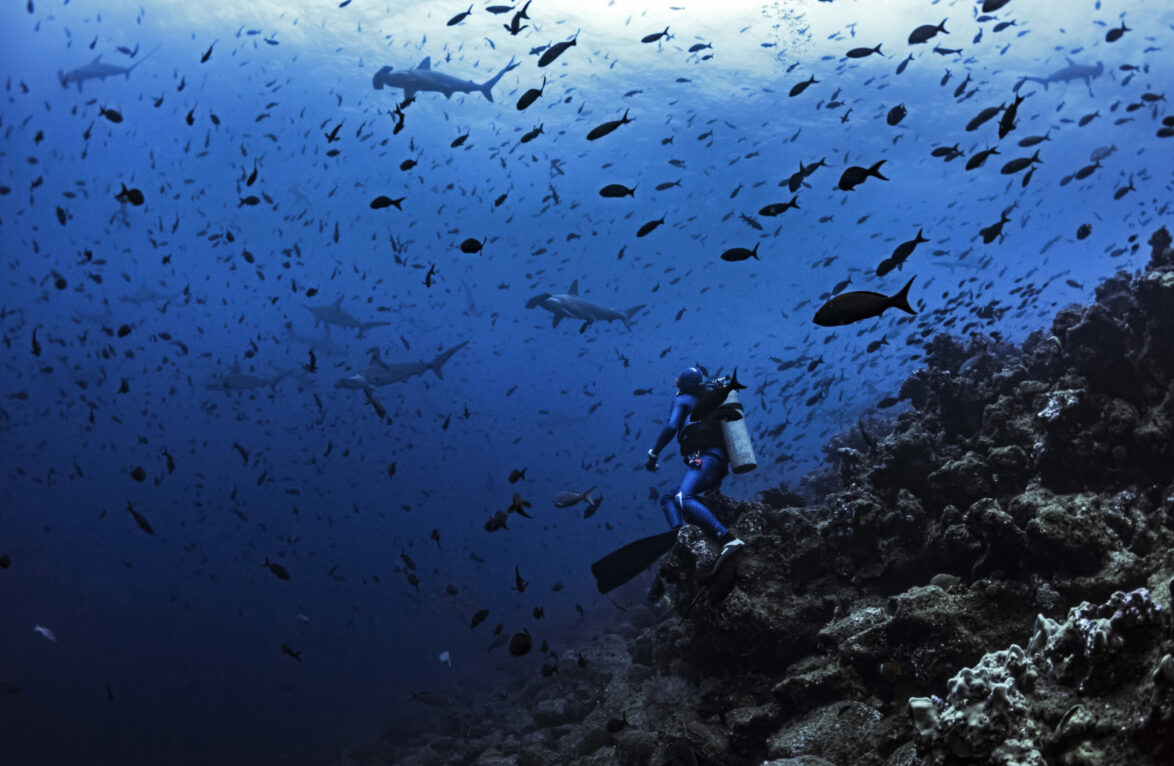
The newly established Hermandad Marine Reserve (HMR), an open-water extension to the GMR covering several important seamounts, is a great first step to better protecting marine life and local livelihoods and brings Ecuador’s protected waters to 18.9%. Going forward, we need to ensure that managers can effectively enforce protections and measure the HMR’s impact, ultimately helping to make the case to meet 30% ocean protection by 2030. Further data on species presence and movements over time is vital to achieving this, as well as giving us a better understanding of their lifecycles to inform management decisions.
In March 2022, we delivered a research expedition in the south of the GMR, around the island of Española, to tag whale sharks and other migratory species, with a key focus on locating a proposed seasonal southern aggregation of whale sharks with the help of an ultra-light aircraft. Overall, we tagged and tracked five whale sharks, four scalloped hammerhead sharks, four yellowfin tuna and four blue sharks. The scalloped hammerhead sharks made movements between different seamounts in and outside the GMR, providing excellent data on the importance of seamounts in their lifecycle.

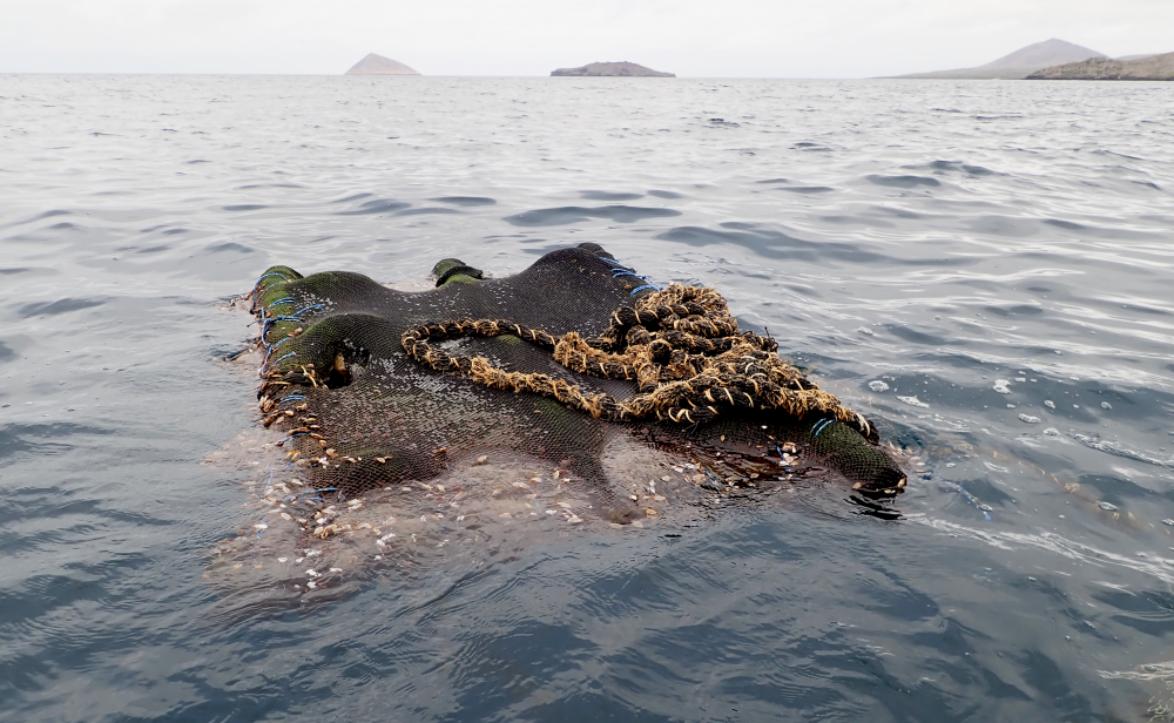
Fish Aggregating Devices (FADs)
FADs are a human-made object used to attract fish. They are used by both foreign fleets and Ecuadorian tuna boats to lure fish outside of the Galapagos Marine Reserve so that they can then be caught.
So far, one of the whale sharks tagged moved directly towards the coast of mainland northern Peru, where the tag appeared on land, presumably following an interaction between a whale shark and a fishing vessel. Three of the other sharks moved over 1,000 km to the southwest of the Islands. The blue sharks gave data for a maximum of a month, and sadly at least two of them were later caught by fishing vessels. One tag was recovered, and the other is awaiting retrieval from a longline vessel. Whilst we are grateful to have collected important data on their movements to inform future recommendations for protection, the blue and whale shark interactions with fishing boats highlight the dangers to migratory species beyond the GMR.
To maximise the positive impacts of protected areas, it is also important to consider the types of fishing gear used within marine reserves and their associated environmental impact. Fishing gear, including discarded or lost ‘ghost gear’, not only has an impact directly on protected species such as bycatch through entanglement, but the gear itself has an environmental footprint across its life cycle including carbon footprints associated with its production and use. With our partners at MigraMar and Pontifical Catholic University of Peru, during the March expedition around Española we began to collect data on different gear types to inform ‘Life Cycle Assessments’, which will eventually help to inform recommendations for fishing gear types appropriate for use in a marine reserve.
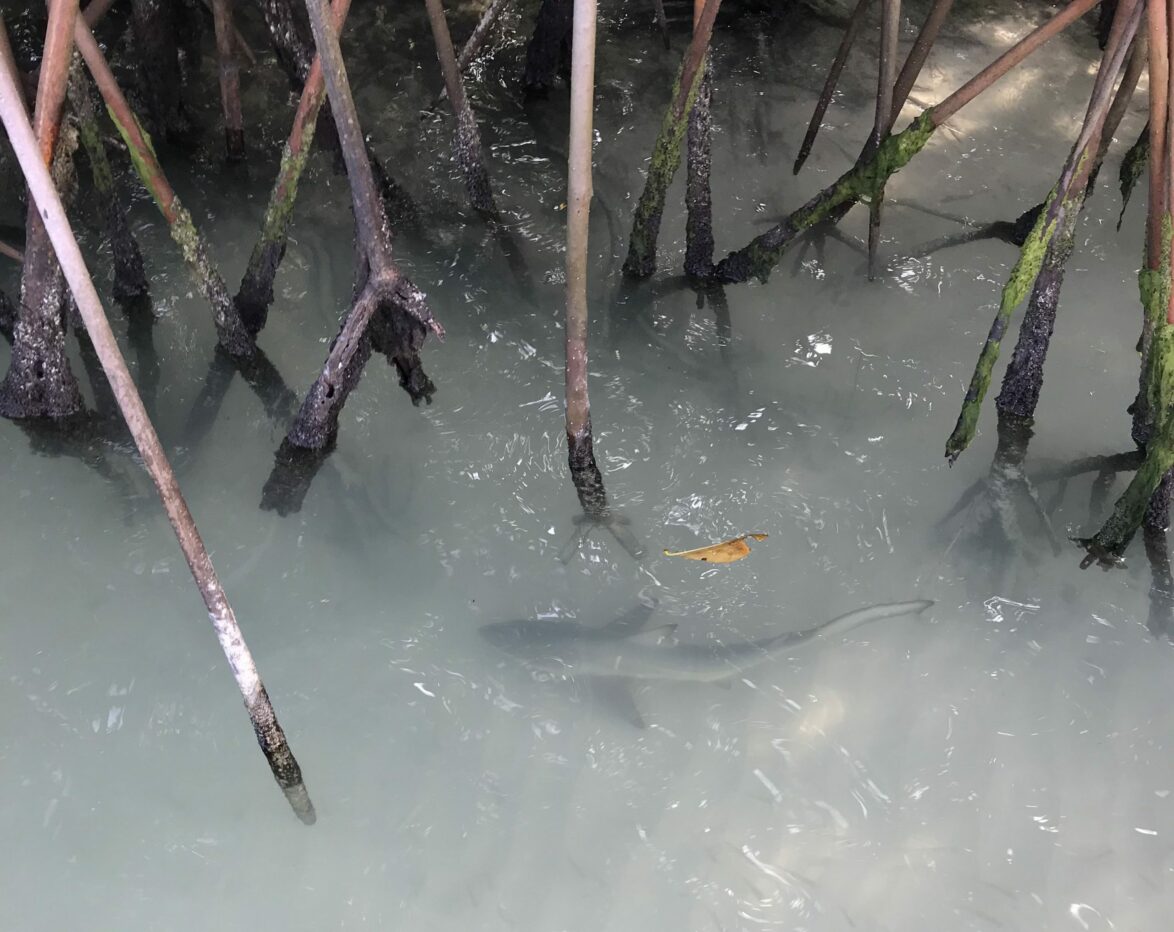
Through this work, we aim to provide recommendations for management actions that will be applicable in both the GMR and the HMR, helping to preserve the integrity of these protected areas whilst promoting sustainable livelihoods. Such recommendations would also complement our ongoing conservation activities at mangrove lagoon shark and ray nursery sites in Galapagos, where we are aiming to improve local protections to increase the survival of juveniles to ultimately improve resilience in adult populations.
Fishing gear, including discarded or lost ‘ghost gear’, not only has an impact directly on protected species such as bycatch through entanglement, but the gear itself has an environmental footprint across its life cycle including carbon footprints associated with its production and use.
Join us
When you become a member of Galapagos Conservation Trust, you will be joining an incredible group of people helping to preserve and protect these precious islands and their unique marine life.
Related articles

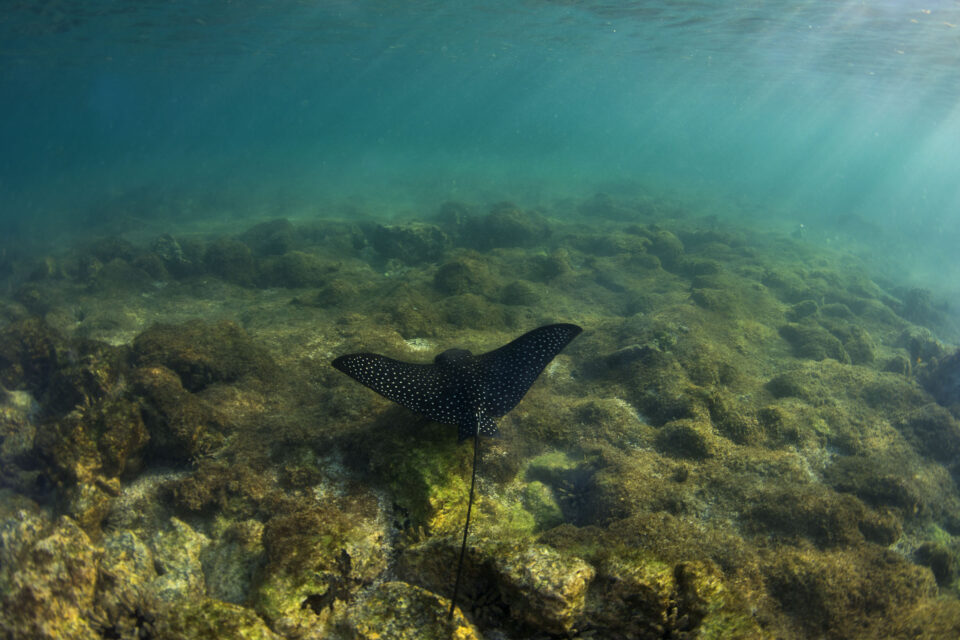
A week in the life of a female marine researcher
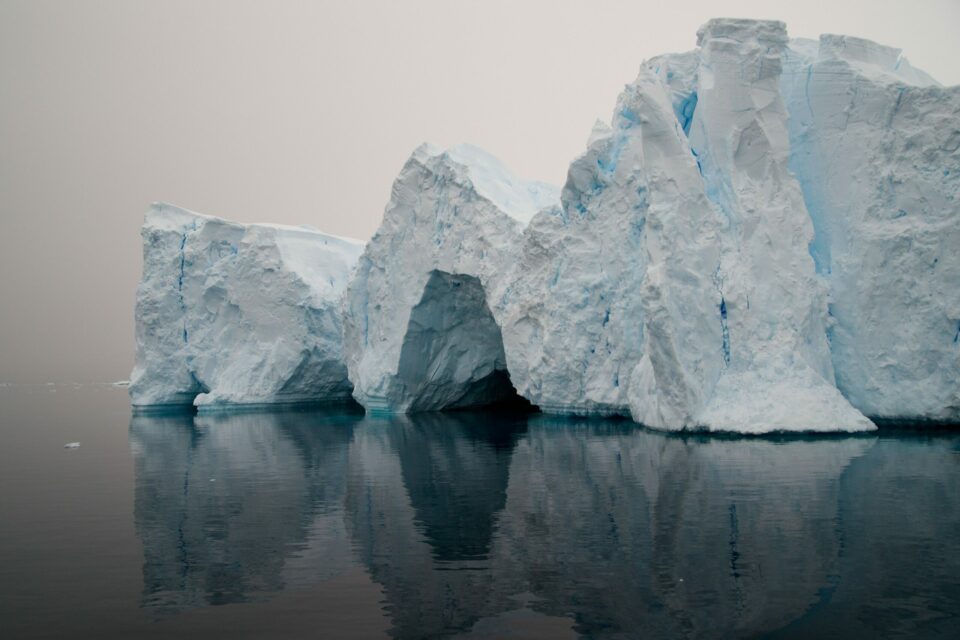
Galapagos and the Antarctic: A look beneath the surface
